Munich is a city with a checkered past. Think of the images the name itself calls to mind: Beer gardens and pretzels; oom-pah bands and sausages, lederhosen and dirndls—and also the ugly beginnings of the Nazi party, and an agreement in 1938 that turned Hitler loose on Eastern Europe.
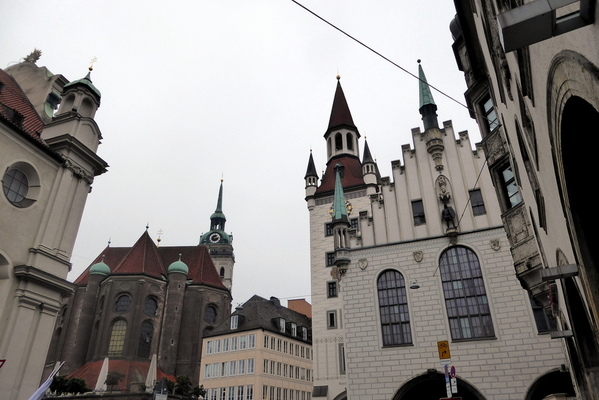
Near Marienplatz in the city center, a variety of styles and steeples
For this rambler, all of those are there, and more: outstanding museums, buskers, an older history, and some uniquely quirky architecture. Walking the city for a week and then writing about markets, churches and a few more, I find myself with another collection of a rambler's noticings and comments.
We started our week with a visit to the Neue Pinakothek, the city's museum of 19th century art (with a bit of overlap); it has an amazing collection, started by King Ludwig I of Bavaria. This building, from 1981, replaced the original, destroyed in World War II bombing. Its partner, the Alte Pinakothek, which houses the collections of earlier art also suffered war damage; the center section was rebuilt with subtle differences in style as a reminder.

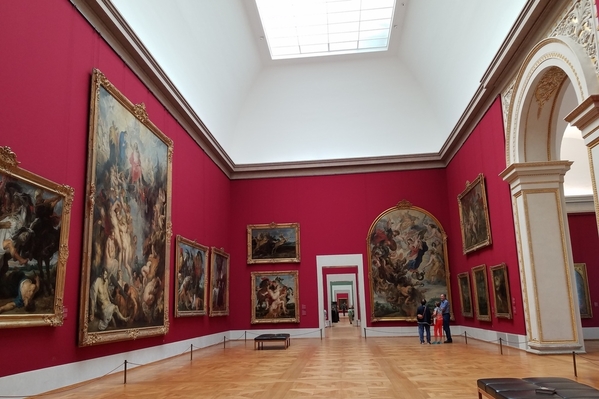
In the Alte Pinakothek, one of the rooms seemingly devoted to giant pictures.
Just around the corner from the Pinakotheken, we encountered another kind of museum: The National Socialist Documentation Center. Opened in 2015, it's a multi-media examination of the Nazi era and the role Munich played as the "Capital City of the Movement," as the Nazis called it. It's an unblinking look that answers many questions—and leaves new ones. The building to the left, now part of the Music University, was the Führerbau: Hitler's headquarters.
Königsplatz, the King's Square, is just down the street from the center, and the giant plaza in front of it was a center of Nazi rallies. The monumental buildings along its side were adapted for their use also; today they are used as museum buildings, including natural history. After the war, the whole area was left mostly 'blank' for several years before re-use and re-building. The specifically Nazi monuments were removed quickly, though.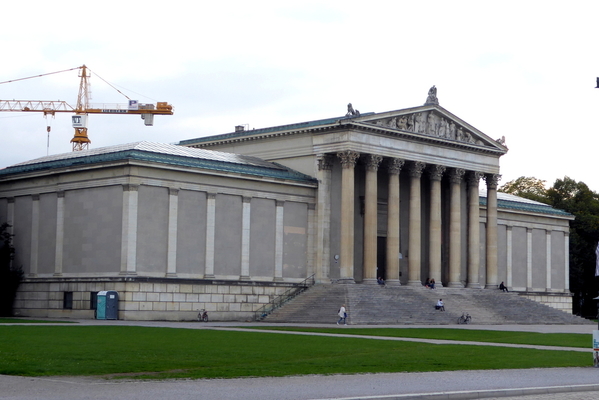
While the building above has a rather grim facade, Munich is also home to some exuberant, even extravagant facades. Many ordinary buildings have elaborate painted or molded decoration, apparently just because they can.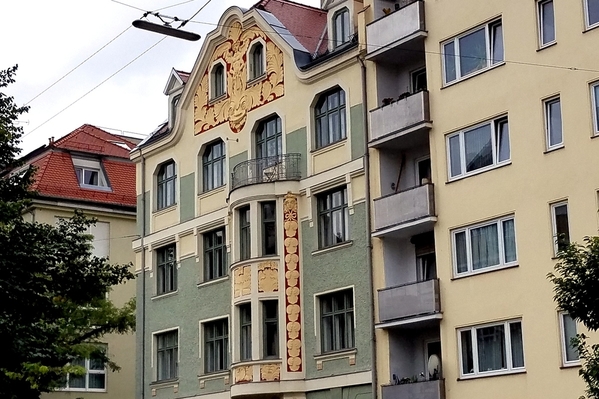
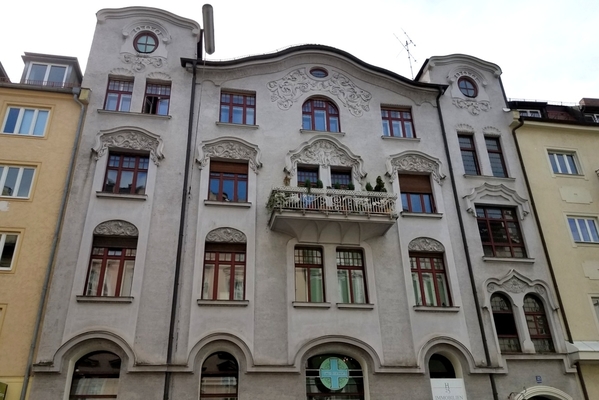
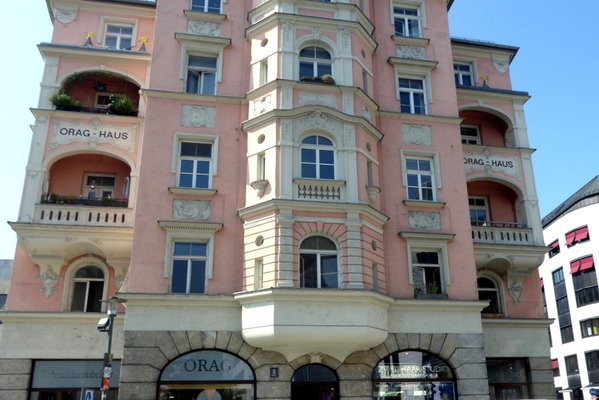
Churches are often a spot for spotting decor; this one's a church just off Hohenzollernstrasse in the Schwabing district, near where we stayed. Just below, a more restrained facade near Königsplatz, on a former private house now used by an academic consortium.
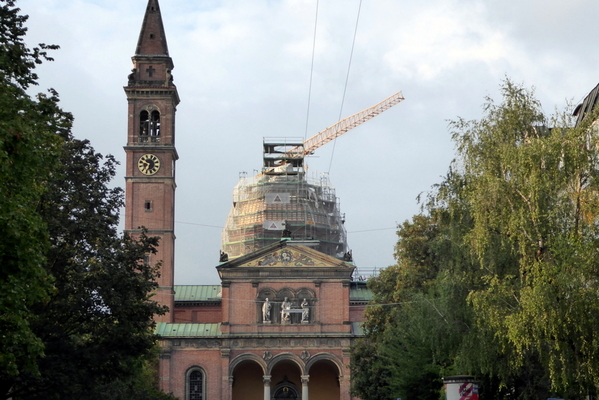

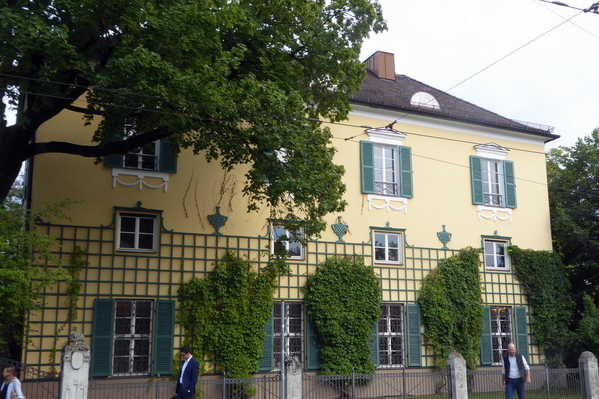
This 19th century building held some Bavarian royal offices as well as apartments for well-connected people; below it, a wall of the Frauenkirche, which serves as Munich's Catholic Cathedral, and the fountain in front of it.
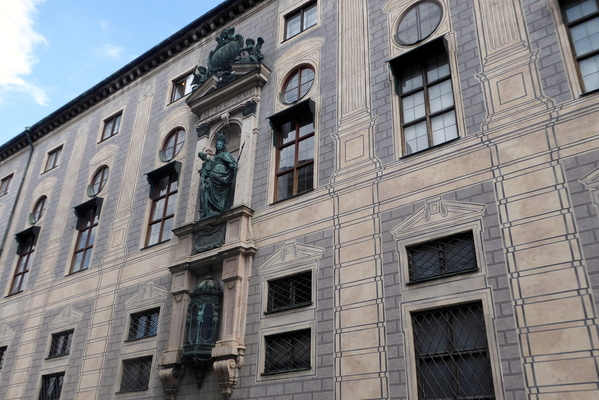
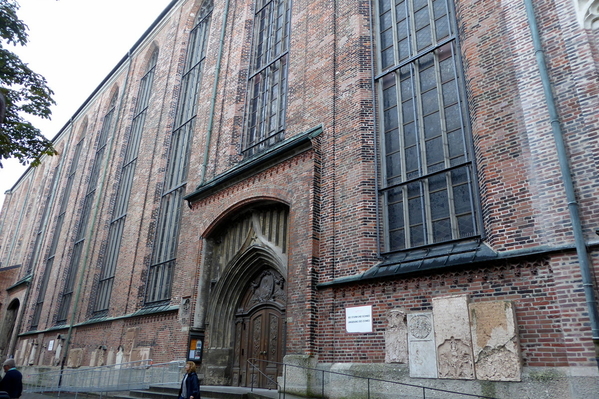
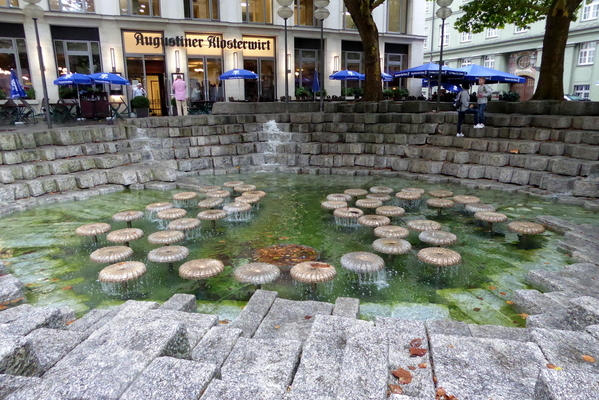
Münchners refer to this fountain as the 'Wasserpilzen,' or water mushrooms
But I think it's time for a food break. Here are a few of the meals we enjoyed (but only one at a time!) You'll notice a bit of a pattern: plenty of pork, pretzels, potatoes...along with cheese, dumplings and cabbage.

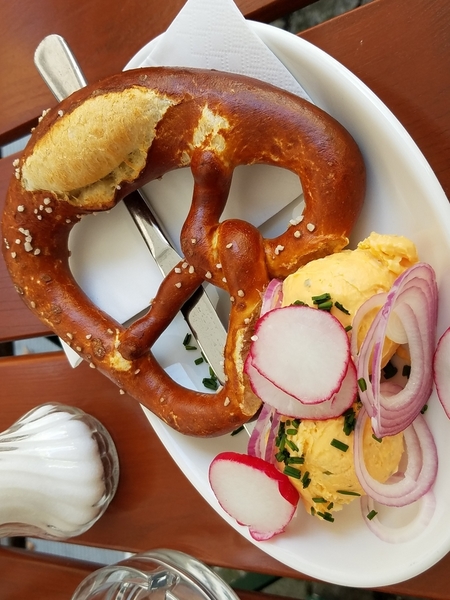
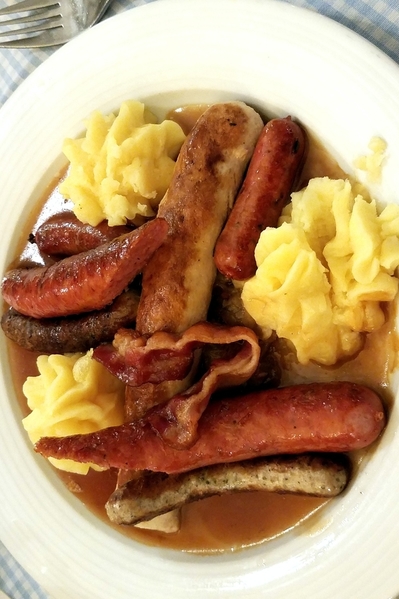
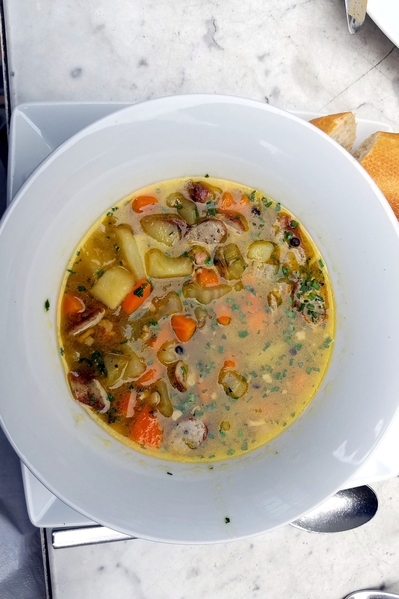 And the pretzels are everywhere. These are the real thing, dipped in lye before baking, not over-salted, firm crust, chewy center...well, not like the snacks we eat with dips. The upper one is in a toy store in Schwabing; it's an inflatable pool toy. The one below is the trade sign for a pretzel stand on Marienplatz.
And the pretzels are everywhere. These are the real thing, dipped in lye before baking, not over-salted, firm crust, chewy center...well, not like the snacks we eat with dips. The upper one is in a toy store in Schwabing; it's an inflatable pool toy. The one below is the trade sign for a pretzel stand on Marienplatz.

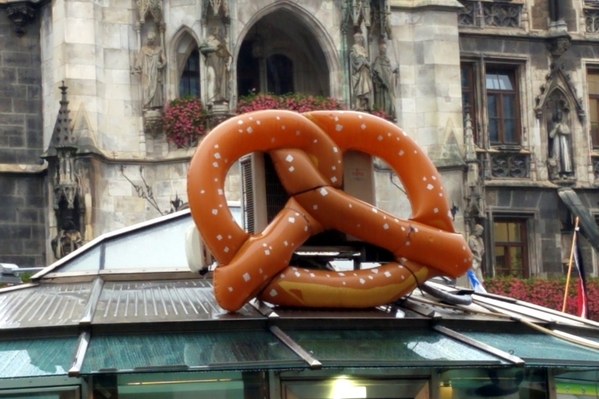
 And, as you may have noticed anywhere you go these days, food can equal controversy. Our time in Munich was during an election campaign for legislators and local councillors, and the city was filled with campaign posters. This one is from the Animal Protection Party, and calls for an end to mass animal-raising, and calls for care for humanity, the environment and animals.
And, as you may have noticed anywhere you go these days, food can equal controversy. Our time in Munich was during an election campaign for legislators and local councillors, and the city was filled with campaign posters. This one is from the Animal Protection Party, and calls for an end to mass animal-raising, and calls for care for humanity, the environment and animals.
Here are some more animals, none of them in danger of ending up on anyone's dinner plate, though.

And here's evidence of concern for other animals: one of many types of clips and hooks we saw for dogs to be left outside stores. And speaking of signs: I passed the next one twice before the name of the bar hit me.
This street performer is Ralph Kiefer; he's no Cole Porter, but he did offer a pleasant interlude for shoppers and passers-by. Below, an artist who does street tableaus with himself as part of the performance takes a break for a sandwich. You can see more about him at www.pinturaviva.de.
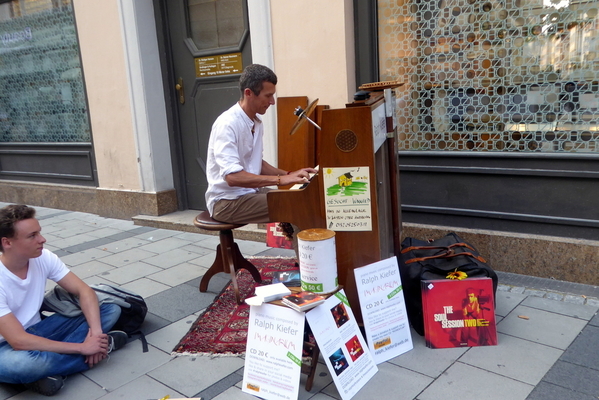
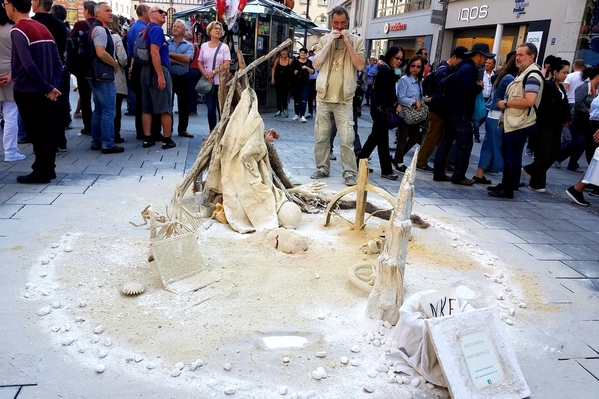
Like many other Munich 'sights and sites,' the tableau was spread out in the Marienplatz, a large square that fronts on Munich's 'New City Hall,' and is just around the corner from the Viktualienmarkt food market. In fact, the market was in Marienplatz until it grew too large and was moved. If Munich can be said to have a single center, Marienplatz is it.
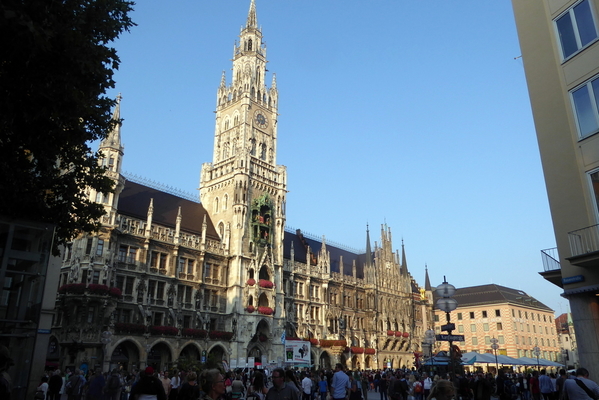 Despite its ancient appearance, it really is relatively new; one part built in the second half of the 19th century and the rest at the beginning of the 20th. Even the famed mechanical glockenspiel that occupies its tower is not ancient, though the architects made every attempt at fooling the eye.
Despite its ancient appearance, it really is relatively new; one part built in the second half of the 19th century and the rest at the beginning of the 20th. Even the famed mechanical glockenspiel that occupies its tower is not ancient, though the architects made every attempt at fooling the eye.
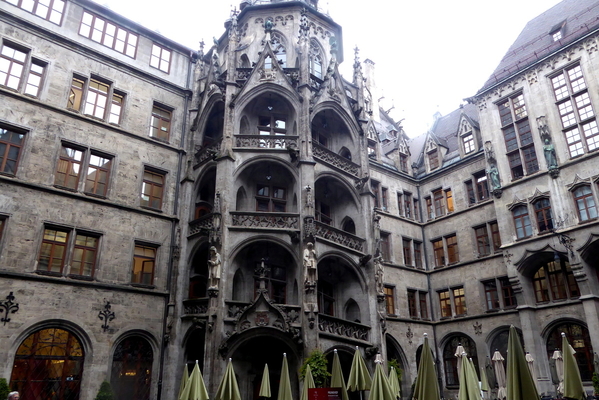
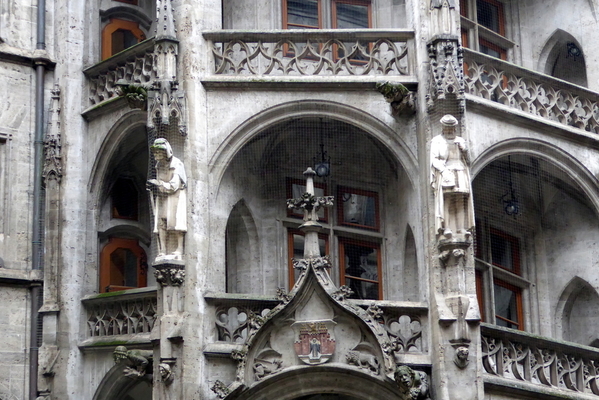
Genuinely old, Saint Peter's Church is at the end of the square; its tower offers one of the best views of the center of Munich—if you are prepared to climb. No elevator available!
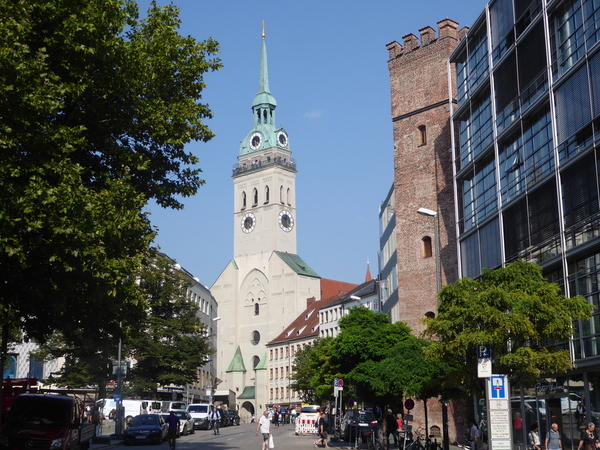 Nearby, in the actually old (15th century) 'Old City Hall,' we spotted a sizable Toy and Teddy Bear Museum, which might have made a nice visit—except for the child-size entrance and steep steps. When I say 'actually old,' I should add a qualification. Both the Old City Hall and Saint Peter's suffered severe bomb damage during World War II, and were painstakingly restored.
Nearby, in the actually old (15th century) 'Old City Hall,' we spotted a sizable Toy and Teddy Bear Museum, which might have made a nice visit—except for the child-size entrance and steep steps. When I say 'actually old,' I should add a qualification. Both the Old City Hall and Saint Peter's suffered severe bomb damage during World War II, and were painstakingly restored.
Also truly old is the Sendlinger Tor, one of the original gates in Munich's city walls, and now a major transit transfer point, as well as a pleasant place to sit, take a coffee break, and be entertained by buskers.
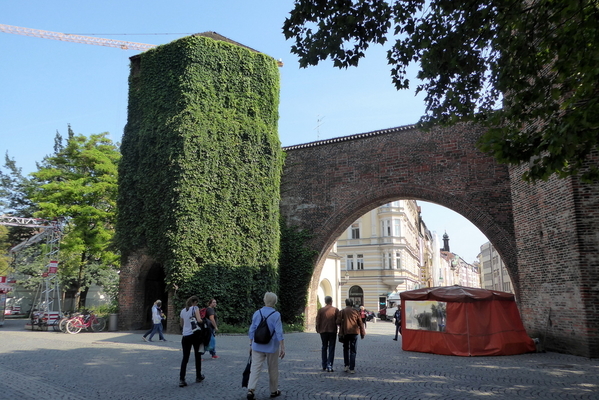
Not far from Sendlinger Tor, at the Munich City Museum (Stadtmuseum) we visited another exhibit exploring the city's role in the Nazi era, including especially the role that museums and curators played in enriching the collections at the expense of Jewish art dealers and patrons, whose stolen or sold-under-duress work has not all been returned. Museums all over Europe are still working (some more avidly than others) on tracing provenance of works.

Outside the museum, another reminder of the war, although one that seems almost impossible to believe. This is a bomb shelter. Up to four people were supposed to lock themselves inside with the concrete walls protecting them from flying bits and the round shape allowing it to roll and thereby escape some of the concussive effect of explosions. Not very many were made.
 We'll end with a salute to bicycles, because the city has so many of them, and because while they are practical, they can also be fun.
We'll end with a salute to bicycles, because the city has so many of them, and because while they are practical, they can also be fun.

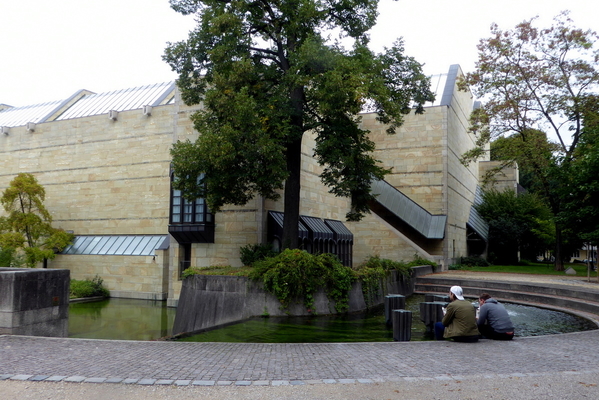

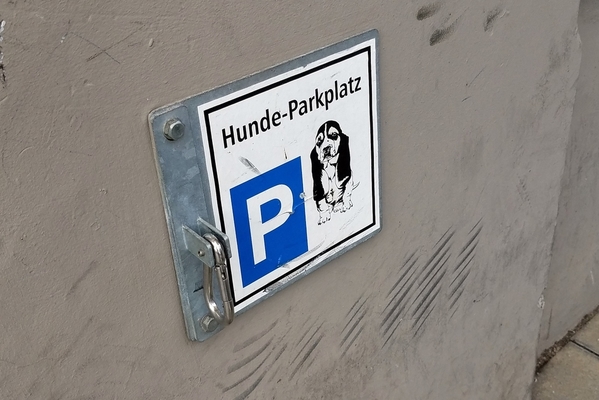
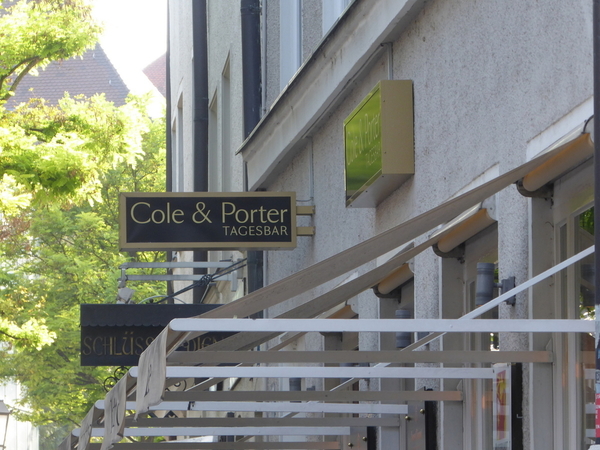
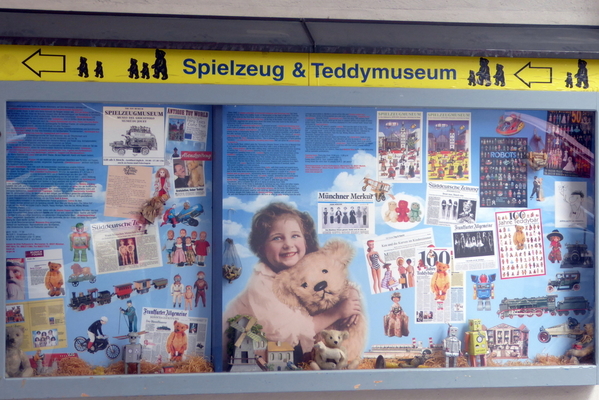












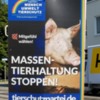

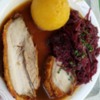

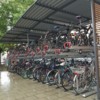
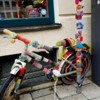
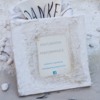




















Comments (0)